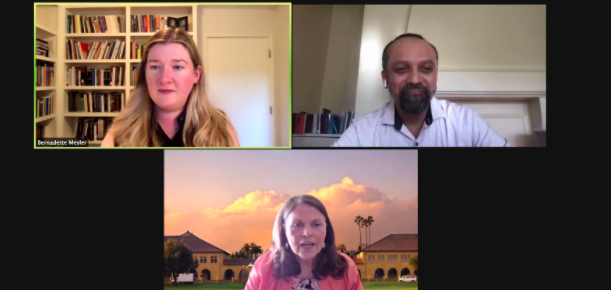“In this circle with faculty members and students and the renaming committee itself, students spoke personally about visceral feelings of harm, trauma and emotional damage to their mental health associated with the Serra name,” said Karen Biestman, the associate dean and director of the Stanford Native American Cultural Center.
Biestman is referring to a conversation that came out of a five year effort examining the impacts of using Junipero Serra’s name on buildings at Stanford. Serra is widely known for establishing the California Fransican Mission system, and for presiding over the brutal colonization and subjugation of the Native Americans who lived there. Over the course of five years, students led panel discussions and marches to draw attention to the renaming effort, gathered over 200 written comments and held robust town halls.
And in 2018, their efforts paid off. The University announced it would be changing the name of prominent campus streetway Serra Mall to Jane Stanford Way.
These efforts to rename spaces that memorialize harmful individuals comes as a part of a broader trend across the United States and at Stanford, where many communities are grappling with how and when to rename buildings and public spaces. Jane Stanford Way is one of several University landmarks to receive a new name in the last few years. These trends were the topic of conversation at a Thursday event hosted by the Stanford Historical Society, titled “What’s in a Name?: Renaming at Stanford.”
Changing the names of important landmarks is not always easy. Biestman described her multi-year efforts, as well as the engaging conversation students had with administrators about the Serra name, as a turning point in the University’s decision to remove the Serra name from numerous prominent buildings.
“The committee’s finding was grounded in Stanford’s goal of supporting the full inclusion of people of all backgrounds and perspectives that the mission system is violence was part of the history and memory of current community members,” Biestman said.
Renaming spaces can be an important step in inclusion, but it is not alone will not create lasting change. Associate professor of classics Grant Parker cautioned the audience to consider the context under which public areas are renamed.
“It is easier to change names, than to fix a pandemic, or a broken housing education or health system, or to address an economic downturn, which sees the Eastern Cape, basic perhaps the most extreme unemployment in the country,” he said.
At Stanford, the conversation about renaming was ignited again last October, when the University decided to rename Jordan Hall and relocate a statue of Louis Agassiz after students, faculty and staff brought attention to both men’s history with eugenics.
In 2018, the University also removed the Serra name from numerous prominent public spaces. New signage was also placed strategically on campus to contextualize the name changes.
Chair of Stanford’s Advisory Committee on Renaming Jordan Hall and Removing the Statue of Louis Agassiz and professor of law Bernadette Meyler J.D. ’03, said the University considered six main areas during the renaming process: the centrality of the person’s offensive behavior to his or her life as a whole, their relation to the University’s history, the harmful impact of the individual’s behavior, community identification with the feature, the strength and clarity of the historical evidence and the University’s prior consideration of the issues and possibilities for mitigation.
“These factors tend to focus those investigating the case upon the particular historical details of the honorees’ life, requiring a fact intensive investigation into their acts and situating those within the context of their time,” Meyler said.
According to Meyler, the fact that Jordan had promoted eugenics from his platform as president of Stanford made honoring him on a building where students researched and attended classes particularly disturbing. The name change has also allowed the University to set the tone for the surrounding community in regards to considering the past.
However, the effort should go beyond renaming.
“If a name change is a gesture, it will suffice as such,” Parker said.
